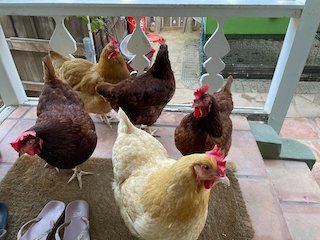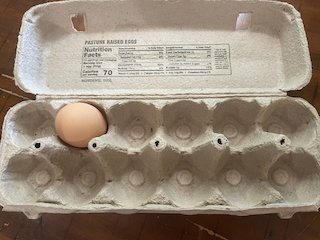My Other Math Sites
Lessons From the Classroom
Task First
I shared these two slides in my earliest talks on the need to embed problem solving into the mathematics curriculum.
Of course I wanted to show off. Not because I got first place (totally because I got first place), but because that piece of paper is the only personal possession that says I won something. You’d think my family would put it in frame, but nobody cared so I put a border of Scotch tape around it. Seeing the obvious care in my taping job is both impressive and pathetic.
When it surfaced while I was cleaning out files (the ones that lived in a massive tall ugly metal file cabinet), I immediately questioned its authenticity. The internet came through with this article from Boise State two years prior to the event. Apparently I got to participate because I was in TAG (talented and gifted). You know what’s dumb though? My English teacher transferred me to TAG—a class full of students who were actually talented and gifted—because of my writing. I remember dreading the transfer and telling my teacher, “But… I’m just trying to learn English.”
The now decades old shift from “back to basics” to “problem solving” in school mathematics makes me wonder why we even begin with the basics and fluency as if they were absolute prerequisites to problem solving and reasoning. We don’t do that with other learnings, like riding a bike or making a batch of cookies. We teach writing by having students do three things: 1) write, 2) write some more, 3) don’t stop writing. So when NCTM (1980) stated that problem solving needs to be “the focus of school mathematics,” we each went our separate ways and implemented what we thought that meant.
Our separate ways might be what I read in Chapter 3 of New Directions for Elementary School Mathematics: 1989 Yearbook (Schroeder & Lester, 1989) where teachers’ approaches to problem-solving instruction fall into three categories:
Teaching about problem solving
Teaching for problem solving
Teaching through problem solving
While it is the third approach, teaching through problem solving, that I subscribe to and advocate for, it’d be foolish (perhaps even impossible) to ignore the other two approaches as I believe teaching about and for are byproducts when teaching through. The converse is not true, however, meaning the first two approaches do not yield problem solvers and deep thinkers the same way that teaching about bicycle wheels and chains does not yield bike riding. At least it does not elicit the wind-in-your-hair kinda joy from actual bicycling.
Below is the best evidence I see that we’re not on the same page.
The person tweeted out this reply when Open Up Resources quoted what I’d said in a talk. And what I’d said was to challenge all students, not just a select few, and we shouldn’t equate struggle with arithmetic/computation as an inability to problem solve.
But we can be on the same page, at least be in the same book, with a shared vision that mathematics learning must be inclusive. I wonder if the exactness of math calculation—that 2 + 5 = 7, and 20% of 80 is 16—somehow translated into the perceived need for exactness of math teaching, at least in its sequence. It reminds me of when a teacher observed me facilitate a lesson on stacking cups and was genuinely surprised that I didn’t teach “the y-intercept” prior to this task.
All that to say we should start presentations with a task, best icebreaker I know, even one like this from Thinking Mathematically (Mason, Burton, & Stacey, 1982):
I have just run out of envelopes. How should I make myself one?
Maybe that was a bad example. Hurry before it becomes obsolete like a file folder.
Thinking About Math PDs
I’ve been thinking hard about math PDs in general, like why do we seem to have the same conversations from more than a century ago. In my last talk, I shared a couple lines from J. W. A. Young’s book, 1906:
The question is not how much? but how? The object is mastery… , and not to train the memory, or to ingest a large bulk of mathematical fact and formulas.
Then Herbert Spencer, 1929, stated that:
Rule teaching is now condemned as imparting a merely empirical knowledge—as producing an appearance of understanding without the reality. To give the net product of inquiry, without that inquiry that leads to it, is found to be both enervating and inefficient.
But I and many others have sat through math classes that Young and Herbert spoke of in trepidation. We consumed mathematics passively. We interpreted good grades as sufficient knowledge and understanding. Then we became math teachers and patted ourselves on the back when our students’ test scores rose.
At CAMT in Fort Worth last month, I leaned over to Sara VanDerWerf and said something like, “I know how to solve the whole PD thing… Teachers meet regularly, observe each other teach, debrief, rinse and repeat. You know, lesson study.” Sara agreed wholeheartedly because she is very kind.
When an admin laments her teachers’ excessive direct-teaching methods despite the trainings, I think about food. Just because we appreciate a good dish—can taste the difference between an okay vs. excellent dish—does not mean we know how to make it. We can be shown lots of greats tasks and how to facilitate them, but it’s heavy lifting to be expected to replicate them with our own kids. What’s more, our PDs are made up of math teachers who normally don’t give the genuine and creative incorrect answers that our students would make. We don’t get to practice asking the right questions at the right time.
The whole PD thing has too many moving parts, too many cooks stirring the pot. I don’t believe there’s one best way to teach. Sure, I vote for student-centered and problem-based learning, but these are shifts in practice and not in themselves classroom strategies. Broadly, I can appreciate what what Peter Sullivan has outlined:
The principal is the leader in teacher professional learning.
This learning is long term.
Teacher improvement must be at the center of any initiative.
All teachers already teach as well as they can, so improvement must be driven by new teacher knowledge and attitudes.
Learning improvement is connected to teaching improvement.
I ran across this lovely thing that John Mason said about a brilliant maths teacher as someone who is “learning to balance care for learner(s) and care of mathematics.”
In other news, I’m happy to share that visualpatterns.org got a much needed facelift from my daughter Sabrina who understood what needed to be done and executed beautifully. As I examined the 471 patterns one by one again, I’m flushed with gratitude for the many contributions, from Simon Gregg’s year 5 students (pattern 99) to Jonothon’s numerous submissions, including this one (pattern 404) that others helped me see.
I’m also happy to be working at Amplify. The year went by rather quickly as I did a fair amount of traveling—enough that I had to rehome our 8 chickens. I washed their feet once more before the nice family with two young daughters came to get them. I think chickens are so smart, but then they also step in their own shit without care so I’m not too sure. I cried for days and wished to raise another flock before I died. This was the last egg from one of my babies. I didn’t have the courage to use it for over a month, then I wanted to make pad see ew, so that was that.




